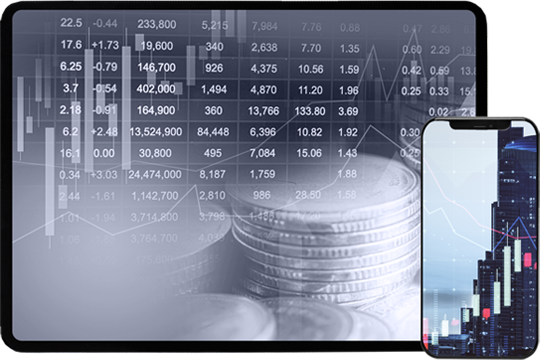Trading Strategies
- Home
- Trading Strategies

Introduction to Trading Strategies
Successful trading requires more than just understanding the markets; it requires a well-defined strategy. A trading strategy provides a structured approach to analyzing market conditions, executing trades, and managing risk effectively. This guide covers essential trading strategies used by traders at all levels, from beginners to professionals
Day Trading Strategies
Scalping
A high-speed strategy where traders make multiple quick trades to capture small price movements.
Momentum
Identifying stocks or assets with strong upward or downward momentum and riding the trend.
Breakout
Entering trades when the price moves beyond a key support or resistance level with increased volume.
Reversal
Identifying potential trend reversals and taking positions accordingly.
Tip:
Day trading requires quick decision-making, high concentration, and proper risk management to minimize losses.


Swing Trading Strategies
Trend Following
Identifying strong trends and entering trades in the direction of the trend.
Pullback Trading:
Entering a trade when the price temporarily moves against the trend, providing a better entry price.
Support & Resistance Trading
Buying near support levels and selling near resistance zones.
Moving Average Crossover
Using two moving averages (e.g., 50-day and 200-day) to identify buy and sell signals.
Tip:
Mastering trading psychology is just as important as mastering market analysis and strategy development.
Position Trading Strategies
Trend Investing
Holding positions in strong upward or downward trends for long periods.
Fundamental Analysis-Based Trading
Making trades based on economic indicators, company earnings, and global events.
Buy-and-Hold Strategy
Investing in high-quality assets and holding them for long-term growth.
Dividend Investing
Buying stocks that pay consistent dividends for passive income.
Tip:
Position trading requires patience and a strong understanding of economic and market trends


Algorithmic & Automated Trading Strategies
Algorithmic trading uses computer programs to execute trades based on pre-set rules and
strategies.
High-Frequency Trading (HFT)
Executing thousands of trades in milliseconds to capture small price differences.
Mean Reversion
Assuming that asset prices will revert to their historical average over time.
Arbitrage Trading
Exploiting price differences between different markets or exchanges.
Machine Learning & AI Trading
Using data-driven models to predict price movements and execute trades.
Tip:
Algorithmic trading reduces emotional decision-making and ensures faster execution, but requires programming knowledge and backtesting.
Risk Management Strategies
Regardless of the trading strategy, effective risk management ensures that traders minimize
losses and protect their capital.
Stop-Loss Orders:
Automatically closing trades at a predefined price to limit losses.
Risk-Reward Ratio
Ensuring potential profit outweighs potential risk (e.g., 1:2 or 1:3 ratios).
Diversification
Spreading investments across different assets to reduce exposure to a single trade.
Position Sizing
Adjusting trade size based on account balance and risk tolerance.
Tip:
Traders who follow strict risk management rules tend to have more sustainable long-term success.


Trading Psychology & Discipline
Many traders fail not because of bad strategies, but because of poor emotional control and
lack of discipline.
Avoiding Emotional Trading
Making decisions based on strategy, not fear or greed.
Developing Patience & Discipline
Waiting for high-probability trades instead of overtrading.
Using a Trading Plan
Following a well-defined plan to maintain consistency.
Journaling Trades
Keeping a record of trades to learn from past mistakes and improve.
Tip:
Mastering trading psychology is just as important as mastering market analysis and strategy development.
Choosing the Right Strategy for You
Consider your trading time availability
Are you a full-time trader or a part-time trader?
Assess your risk tolerance
Are you comfortable with frequent trades, or do you prefer long-term investments?
Determine your preferred market
Forex, stocks, crypto, commodities, or indices?
Practice
Test different strategies using demo accounts before committing real money.
Tip:
The best traders continuously refine and adapt their strategies based on market conditions and personal experience.

Conclusion: Start Implementing Your Trading Strategy
Understanding different trading strategies is the key to developing a sustainable and profitable approach to the markets. Whether you prefer short-term or long-term trading, manual or automated execution, the right strategy combined with strong risk management and discipline can set you up for success.
Ready to take your trading to the next level? Start applying these strategies today!